American red oak—the dominant species in U.S. hardwood forests—is plentiful and affordable. The heartwood has a distinctive grain and ranges in color from pinkish to reddish brown, though not always. (The name refers to the color of its leaves in fall.) Being hard, stable, and easily steamed, bent, planed, turned, oiled, or stained, red oak is ideal for furniture. It’s a hardwood whose versatility, aesthetics, and technical performance deserve the spotlight.
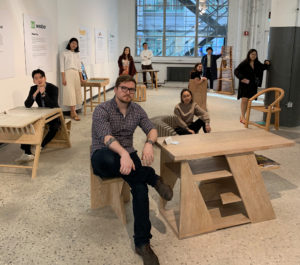
The nine students from Pratt Institute’s Industrial Design department with their red oak project pieces.
Which is why this winter the American Hardwood Information Center and Pratt Institute’s Industrial Design department collaborated on a semester-long course, “Special Project: Red Oak Reimagined.” Set up as a furniture-design competition titled “The Sovereign Wood,” the course focused on working with red oak as a sustainable material for the 21st century. Weaber Lumber in Lebanon, Pennsylvania, gave each of the course’s nine participating students 75 board-feet of wood to work with; their challenge was to make creative use of it in residential furniture, containers, or other household objects with footprints small enough for compact urban living accommodations.
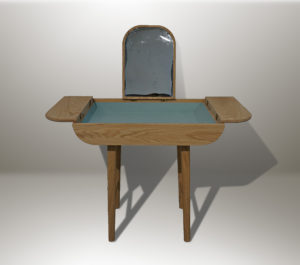
First Place: ritual, a makeup vanity with storage, by Jeongbin Im.
The class explored issues of modularity, multifunctionality, and storage, while also addressing such competition criteria as sustainability, innovation, production technology, and aesthetic impact. The students’ practical understanding and creative imaginations were further stimulated by visits to the Weaber mill and the George Nakashima studios in New Hope, Pennsylvania.
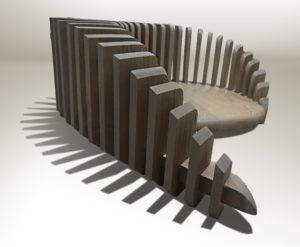
Second Place: Lean, a chair with extended armrest, by Sisi Hong.
At the end of the semester, each student presented a full-size working prototype of a completed piece of furniture together with a visual presentation outlining the thinking and process behind its design and manufacture. The projects were judged by a distinguished, seven-person panel of professionals representing all aspects of the furniture and design industries, prizes awarded, and the nine prototypes exhibited at Wanted Design, an international fair in Brooklyn.
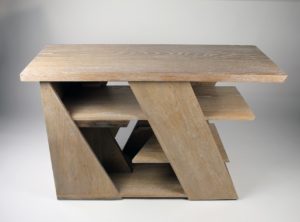
Joint Third Place: Slant, a storage cabinet with chair, by Chase Philpotts
The judges were delighted with general standard of excellence shown in the design, craftsmanship, and execution of all the pieces. First place went to ritual, an elegant and practical makeup vanity by Jeongbin Im. The top opens up to reveal storage space lined in brightly colored felt that contrasts pleasingly with the slightly pink hue of the red oak exterior. In second place, Sisi Hong’s Lean chair—a low-to-the-ground seat surrounded by a picket fence–like arm and leg rest—is light and easy to move despite its almost monumental look. It featured an arresting gray finish. Third place was shared by Chase Philpotts’ Slant, a storage cabinet and chair combination that features an eye-catching cerused finish and particularly fine craftsmanship; and Hyun Woo Lee’s maisoNique, a table that unfolds to provide seating for dining, much like a picnic table.
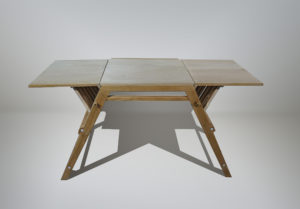
Joint Third Place: maisoNique, convertible dining table with chairs, by Hyun Woo Lee
“It was thrilling to see the way the Pratt students brought a fresh and rejuvenating perspective to the possibilities inherent in red oak,” says the American Hardwood Information Center’s Linda Jovanovich, who was one of the judges. “And it wasn’t just the flair and creativity that the pieces showed in terms of design and aesthetics. A number of them were so well considered from a manufacturing point of view that they could almost be production pieces of furniture. Altogether, the participants more than lived up to the premise of the course: Red Oak Reimagined.”



